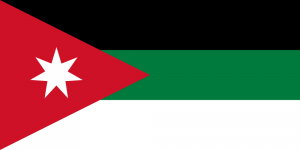Language/North-levantine-arabic/Grammar/Adjectives
Hi North Levantine Arabic learners! 😊
In this lesson, we will explore the world of adjectives in North Levantine Arabic. We will learn how to use them and where to place them in a sentence. Adjectives are an essential part of any language. They allow us to add details and descriptions to our speech and writing. By the end of this lesson, you will be able to use adjectives correctly and make your speech more interesting and informative.
Take a moment to explore these relevant pages as you conclude this lesson: Nouns, Pronouns & Give your Opinion.
What are Adjectives?[edit | edit source]
An adjective is a word that describes or modifies a noun. It adds details about the noun and provides more information about it. In North Levantine Arabic, adjectives usually come after the noun they describe.
For example:
| North Levantine Arabic | Pronunciation | English |
|---|---|---|
| سيارتي الحمراء | siyarta al-ħamraa | my red car |
| طبق الأكل اللذيذ | ţabakh al-akl al-lðhið | the delicious food plate |
| ملابس الشتاء الثقيلة | malabis al-štā' al-θqīla | the heavy winter clothes |
In the examples above, the adjectives "red," "delicious," and "heavy" come after the nouns they describe.
Types of Adjectives[edit | edit source]
In North Levantine Arabic, there are two main types of adjectives: predicative and attributive.
Predicative Adjectives[edit | edit source]
Predicative adjectives come after a linking verb like "is" or "are" and provide additional information about the subject.
For example:
- الطعام لذيذ. (al-'ţa'm laðið.)
- The food is delicious.
In this example, the adjective "delicious" describes the subject "food" after the linking verb "is."
Attributive Adjectives[edit | edit source]
Attributive adjectives describe a noun directly and come before or after it in a sentence.
For example:
- سترتدي الفتاة فستانًا أبيض. (satarudī al-fatā fustānan 'abyð.)
- The girl will wear a white dress.
In this example, the adjective "white" comes after the noun "dress."
Comparative and Superlative Adjectives[edit | edit source]
In North Levantine Arabic, comparative and superlative adjectives are formed using the particles "أكثر" (akthar) and "الأكثر" (al-akthar) respectively, followed by the adjective.
For example:
| North Levantine Arabic | Pronunciation | English |
|---|---|---|
| أكثر سريع | akthar sarii' | faster |
| الأكثر سرعة | al-akthar s'ra'a | the fastest |
In this example, we use the particle "أكثر" (akthar) to say "faster" and "الأكثر" (al-akthar) to say "the fastest."
Practice Dialogue[edit | edit source]
A: ما هي الخضروات المفضلة لديك؟ (maa hiya al-ħðrwat al-mufaððila ladaik?) What are your favorite vegetables?
B: أفضل الطماطم الحمراء. (afðal al-ţumāţu, al-ħamraa.) I prefer red tomatoes.
A: لديك سيارة جديدة؟ (ladaik siyara jadiida?) Do you have a new car?
B: لا، ولكن لدي موبايل جديد. (la, walakin lada munbaal jadiid.) No, but I have a new mobile phone.
Conclusion[edit | edit source]
Adjectives are essential to make any sentence more descriptive and informative. In North Levantine Arabic, adjectives usually come after the noun they describe. There are two types of adjectives: predicative and attributive, and they can be used in comparative and superlative forms. Keep practicing and use adjectives to make your speech more engaging and interesting! To improve your [North Levantine Arabic|North Levantine Arabic Literature], you can also use the [Polyglot Club] website. Find native speakers and ask them any questions!
➡ If you have any questions, please ask them in the comments section below.
➡ Feel free to edit this wiki page if you think it can be improved. 😎
Congratulations on finishing this lesson! Explore these related pages to keep learning: How to Use "Have", Questions & Negation.
Other Lessons[edit | edit source]
- Negation
- Give your Opinion
- Questions
- How to Use Be
- How to Use Have
- Future Tense
- Gender
- Pronouns
- Conditional Mood

